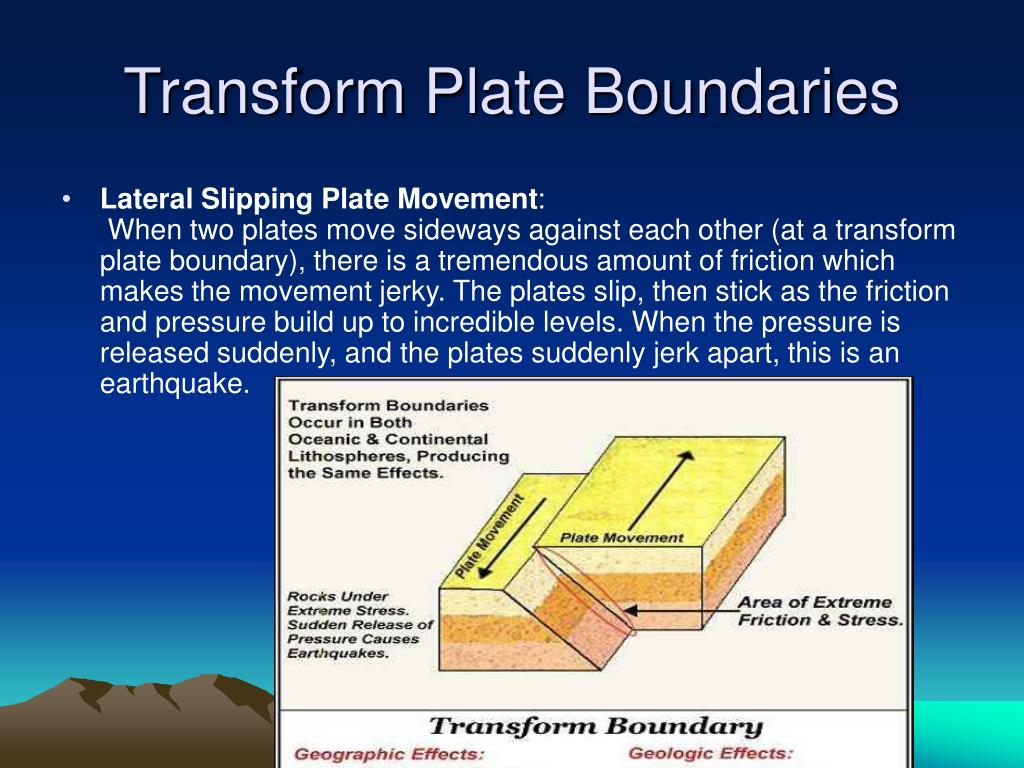

The Alpine Fault in New Zealand It forms a transform boundary between the Pacific Plate and the Indo-Australian Plate.ģ. The San Andreas Fault in California, where the Pacific Plate meets the North American Plate and they grind past each otherĢ. In a transform boundary, neither plate is added to at the boundary, nor destroyed.Įxamples of transform boundary/margins include:ġ. Many transform boundaries are locked in tension before suddenly releasing, and causing earthquakes. However, the most famous transform boundaries are found on land.

Most transform boundaries are found on the ocean floor. Lots of earthquakes are generated at transform boundaries. Since the plates on either side of a transform boundary are merely sliding past each other and not tearing or crunching each other, transform boundaries has no spectacular features. Furthermore, transform faults end abruptly and are connected on both ends to other faults, ridges, or subduction zones.
Transform boundary how to#
COVID-19 Portal While this global health crisis continues to evolve, it can be useful to look to past pandemics to better understand how to respond today. Complex Transform Boundary Features Transform boundaries represent the borders found in the fractured pieces of the Earth’s crust where one tectonic plate slides past another to create an earthquake fault zone.Student Portal Britannica is the ultimate student resource for key school subjects like history, government, literature, and more.From tech to household and wellness products.

There are usually large amounts of earthquake activity at a transform boundary because the two lithospheres are literally grinding against each other. The blue line in this photo on the left represents one of the transform boundaries on the Philippine Plate.


 0 kommentar(er)
0 kommentar(er)
